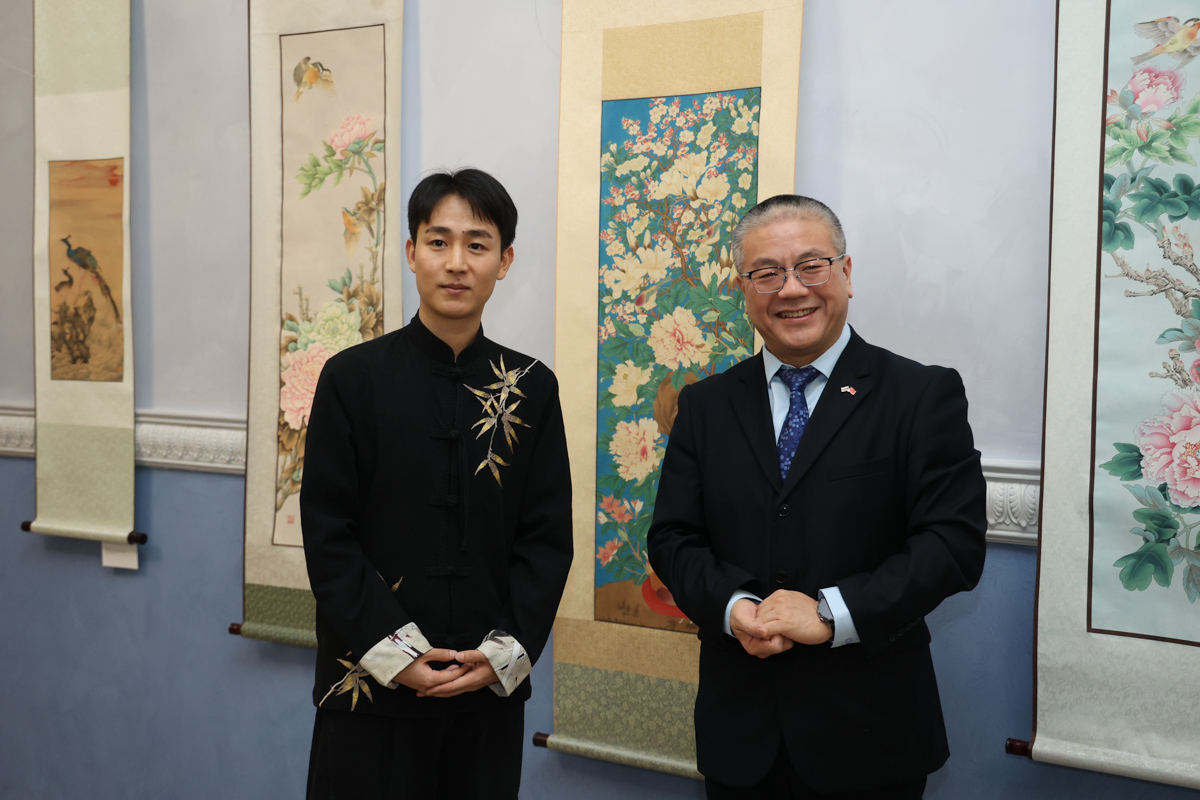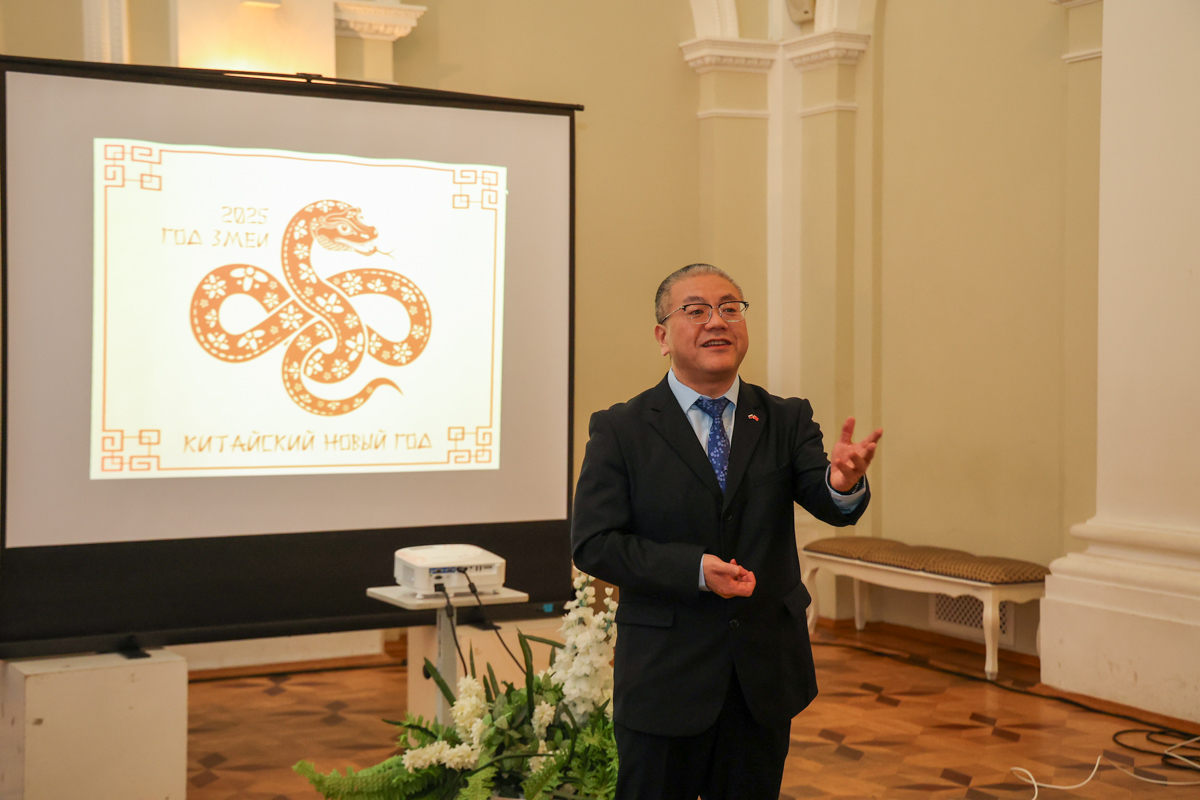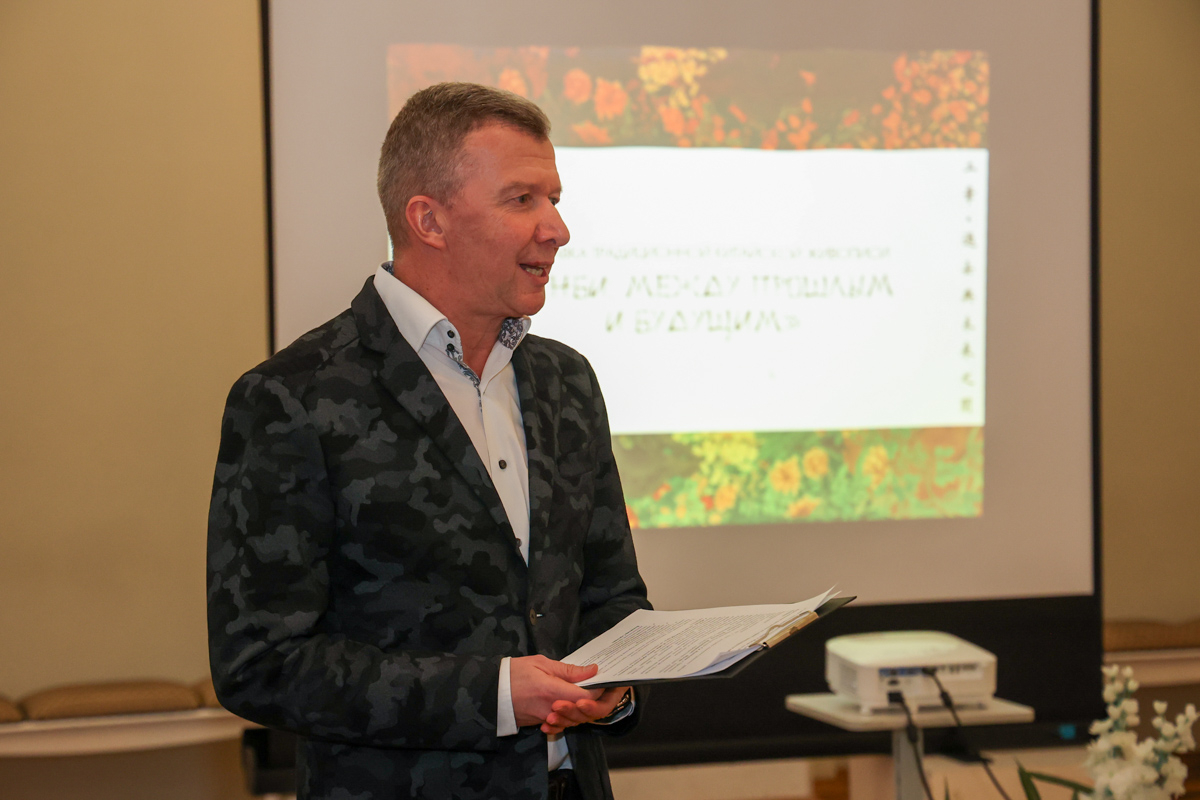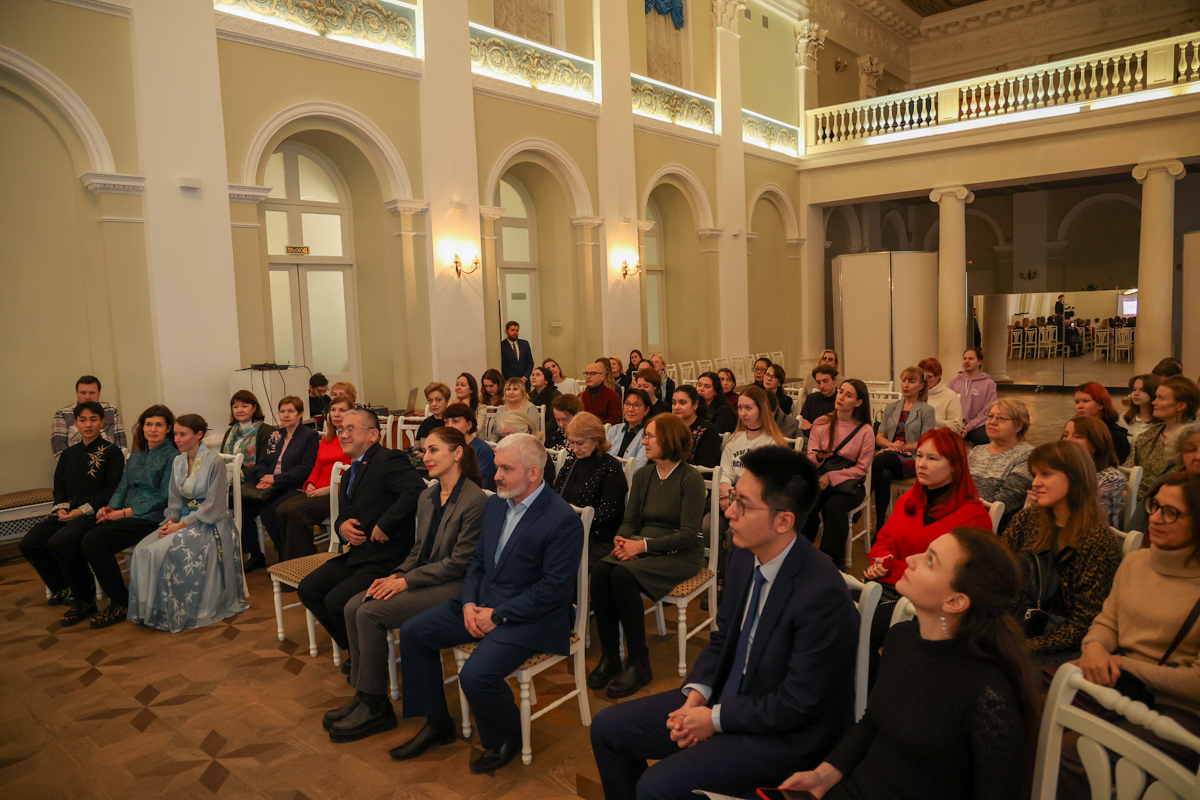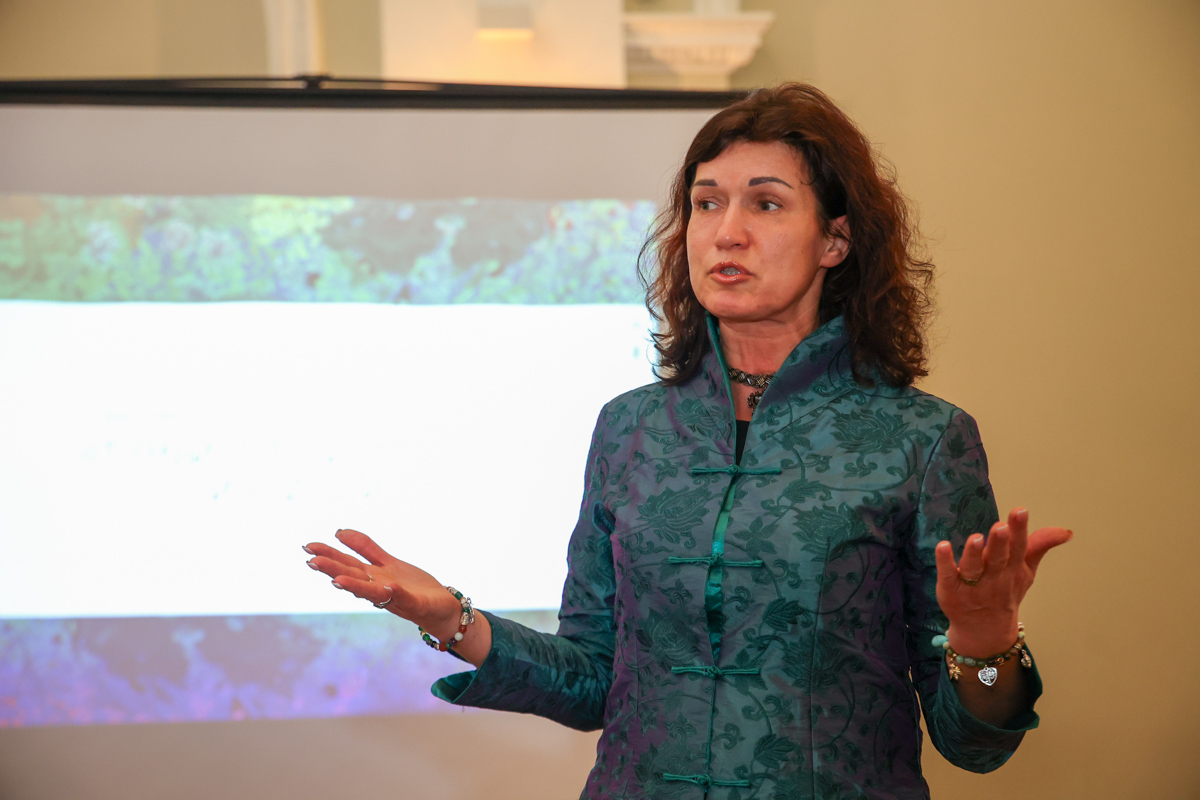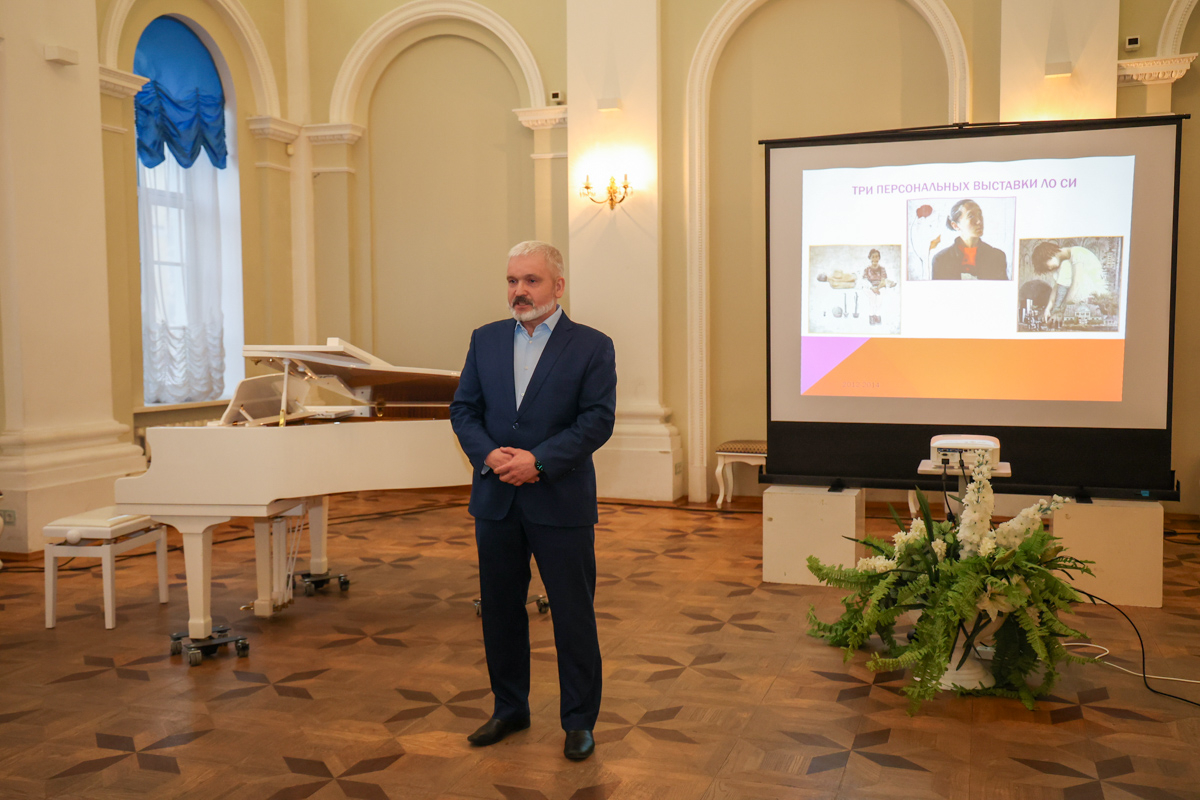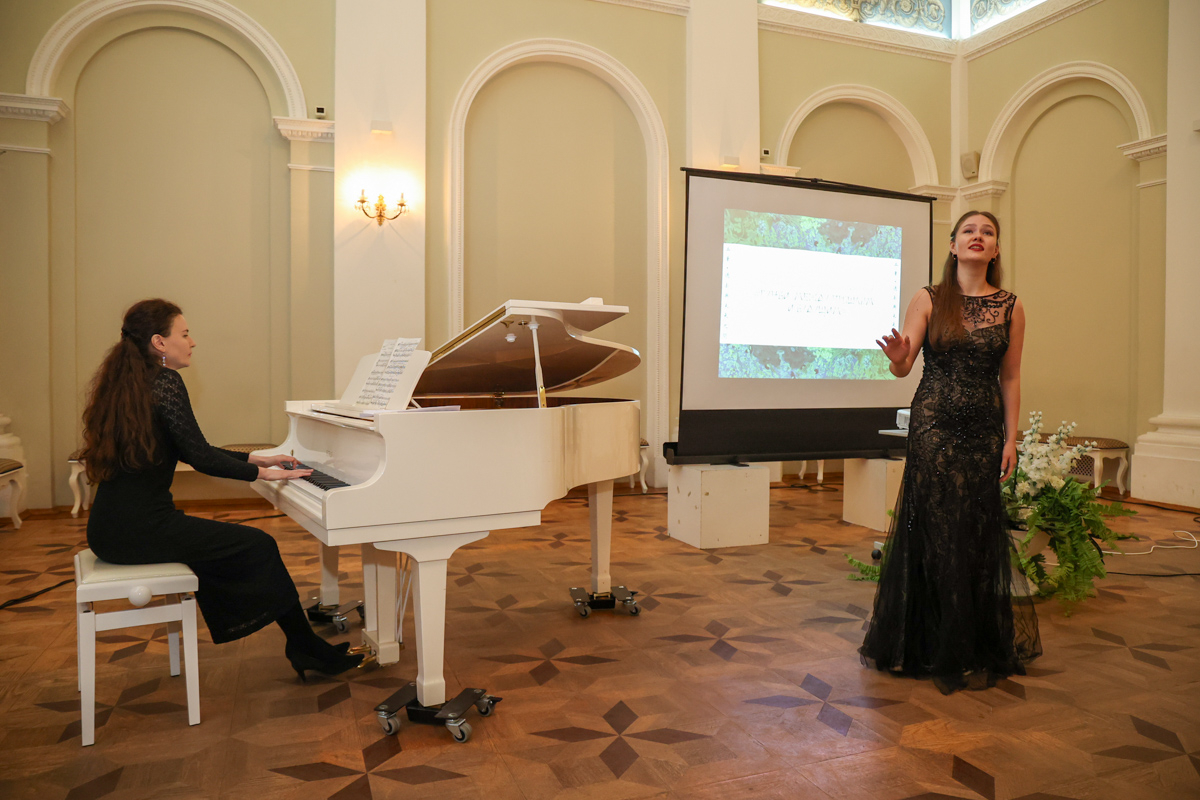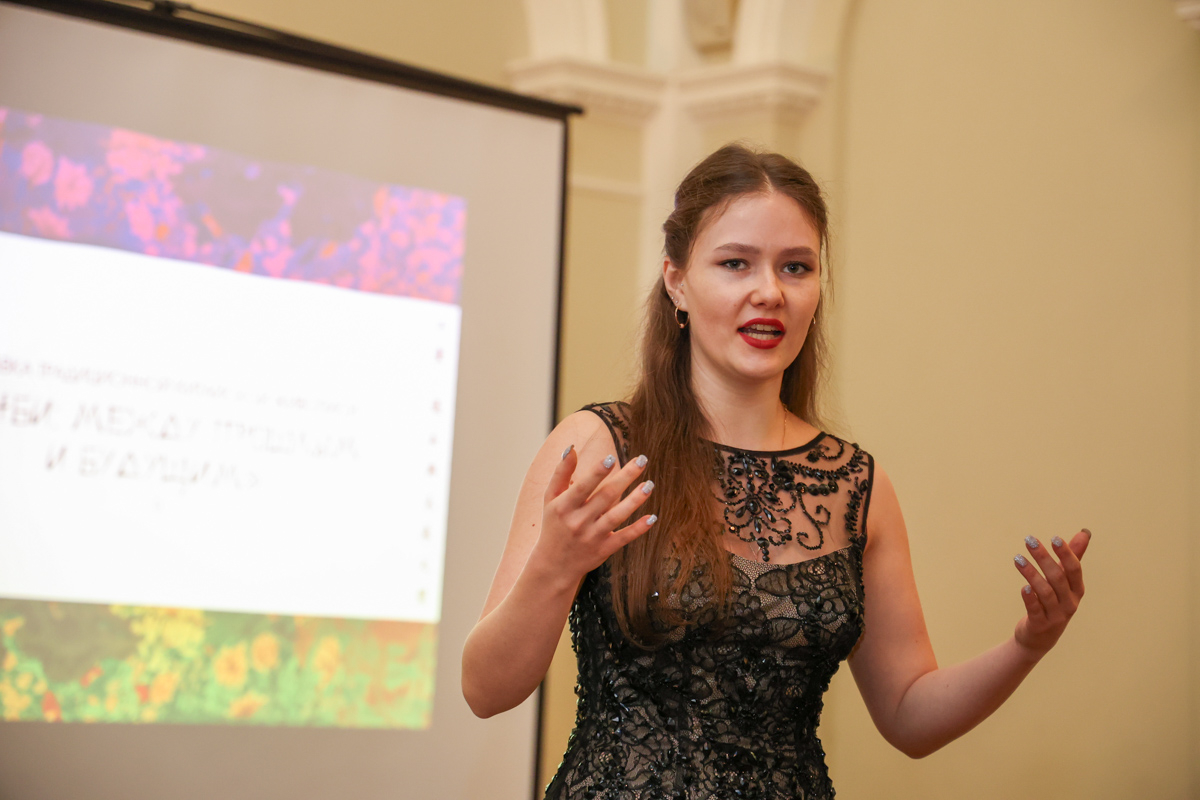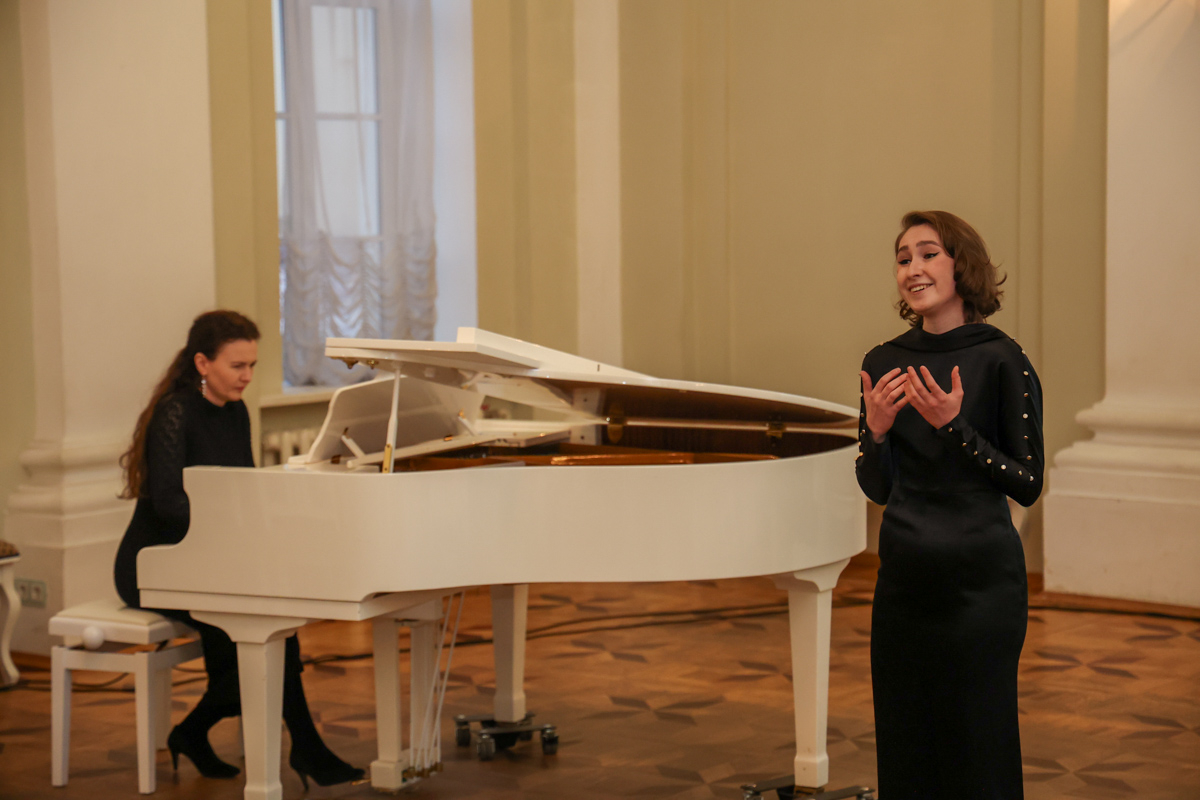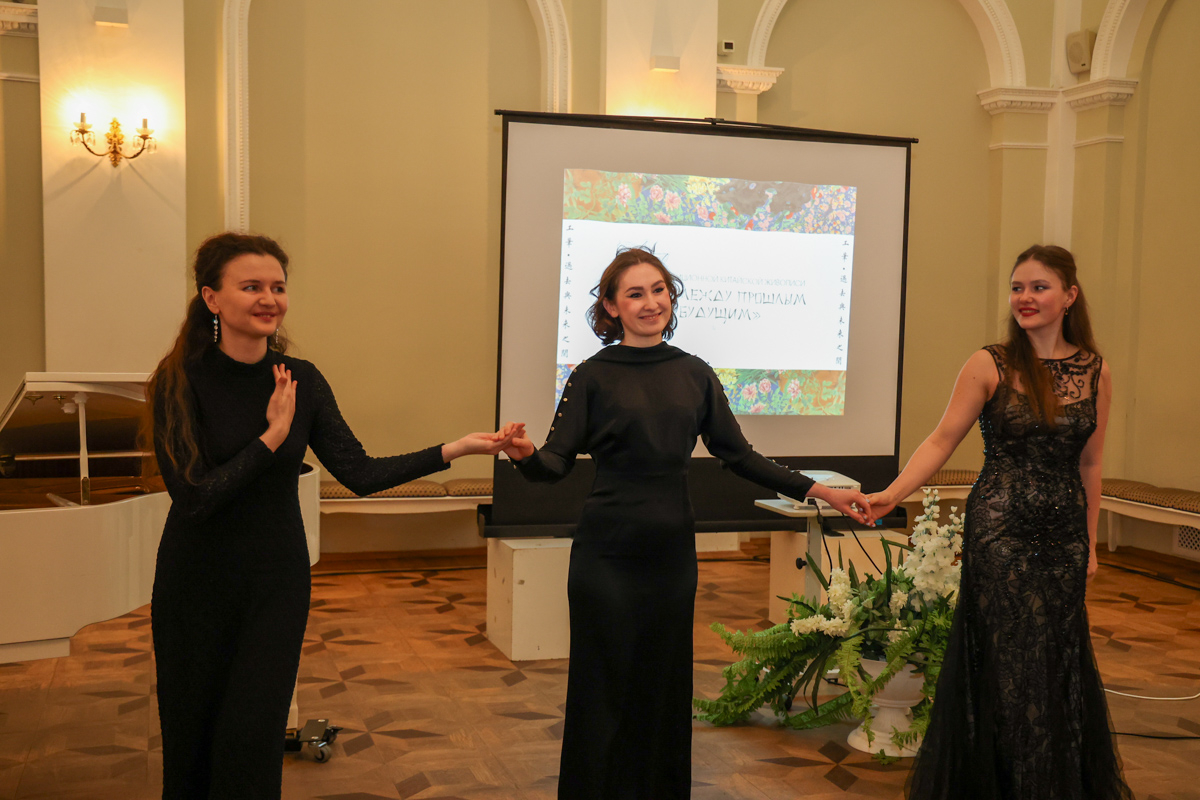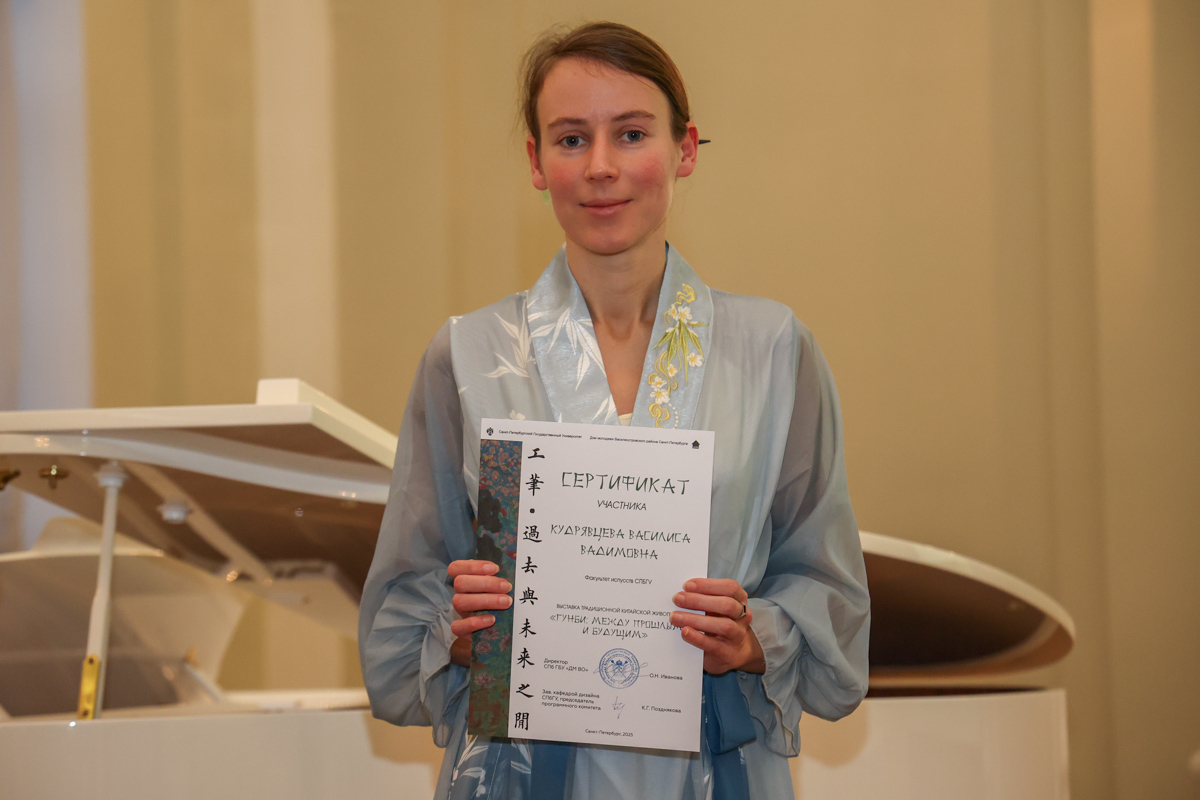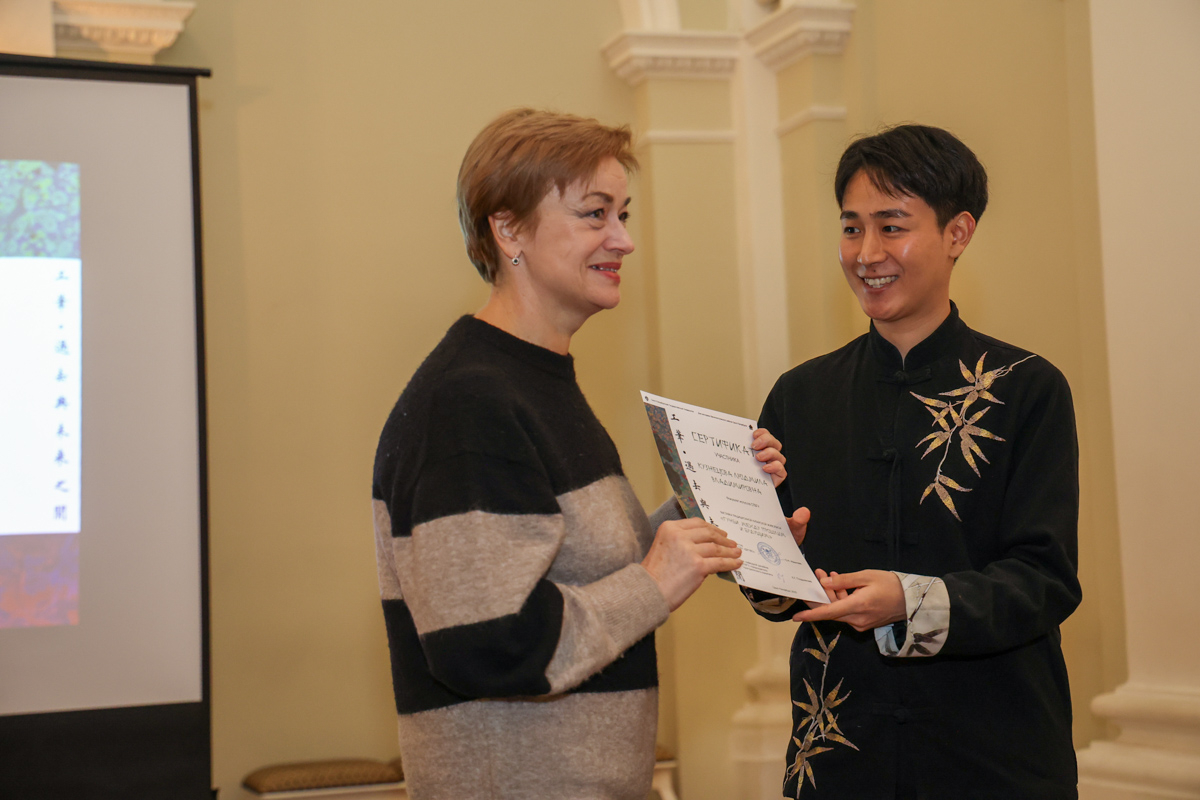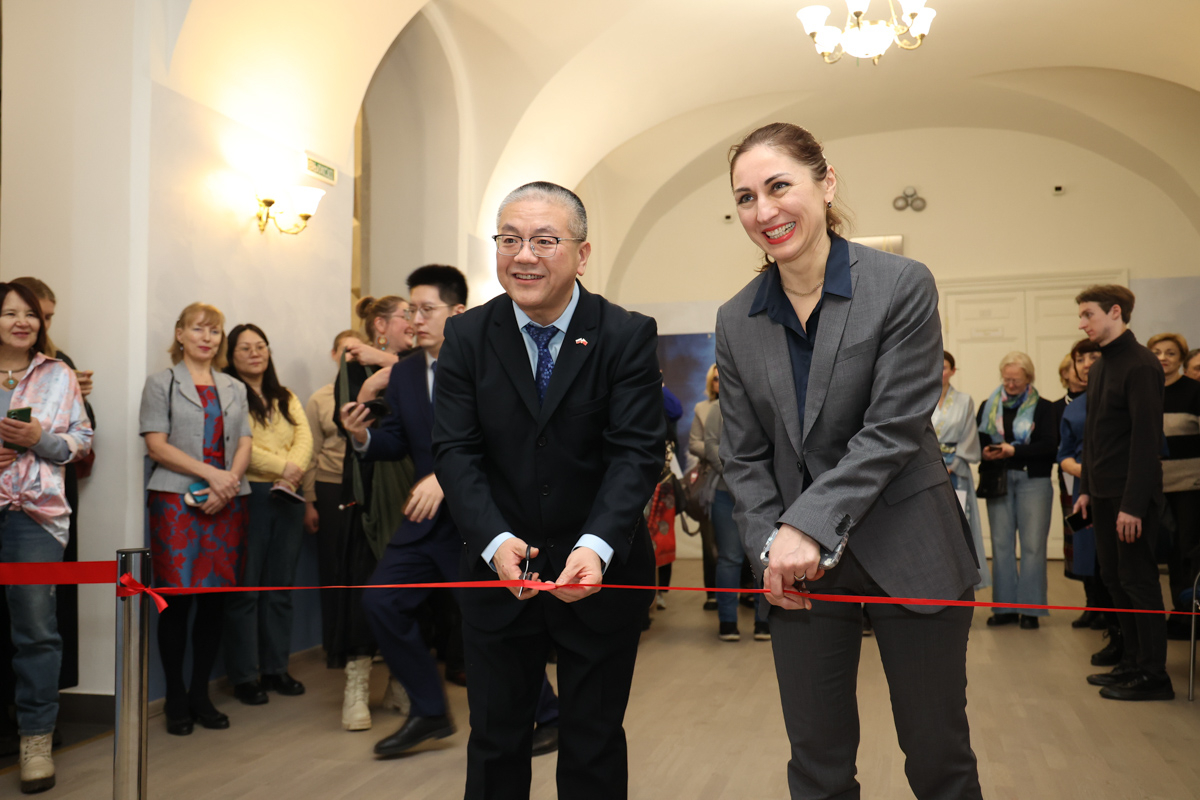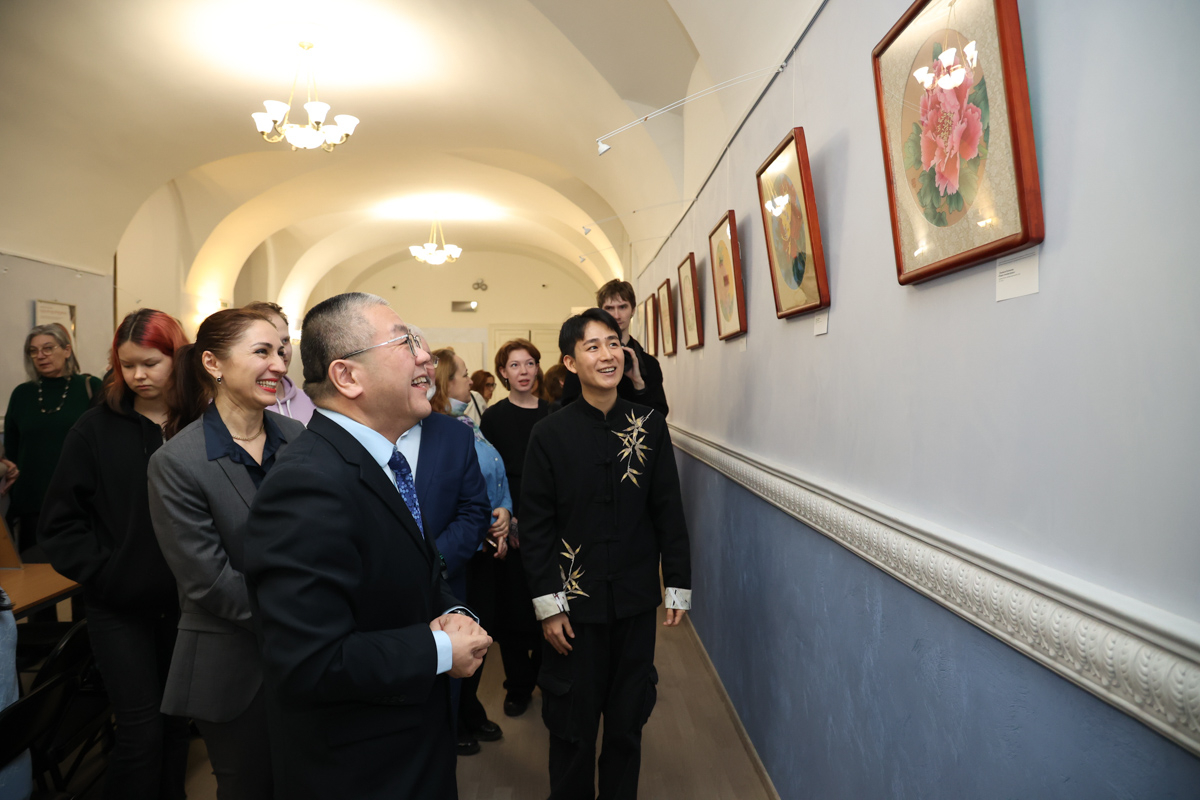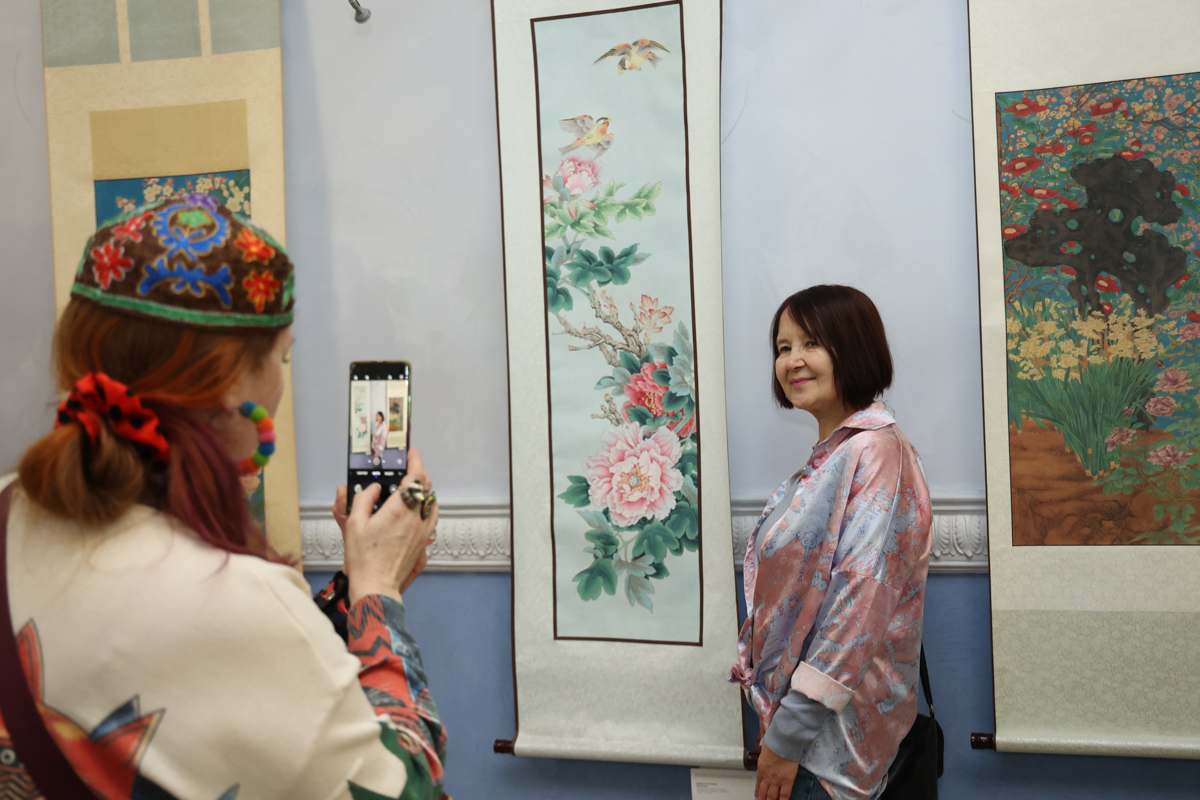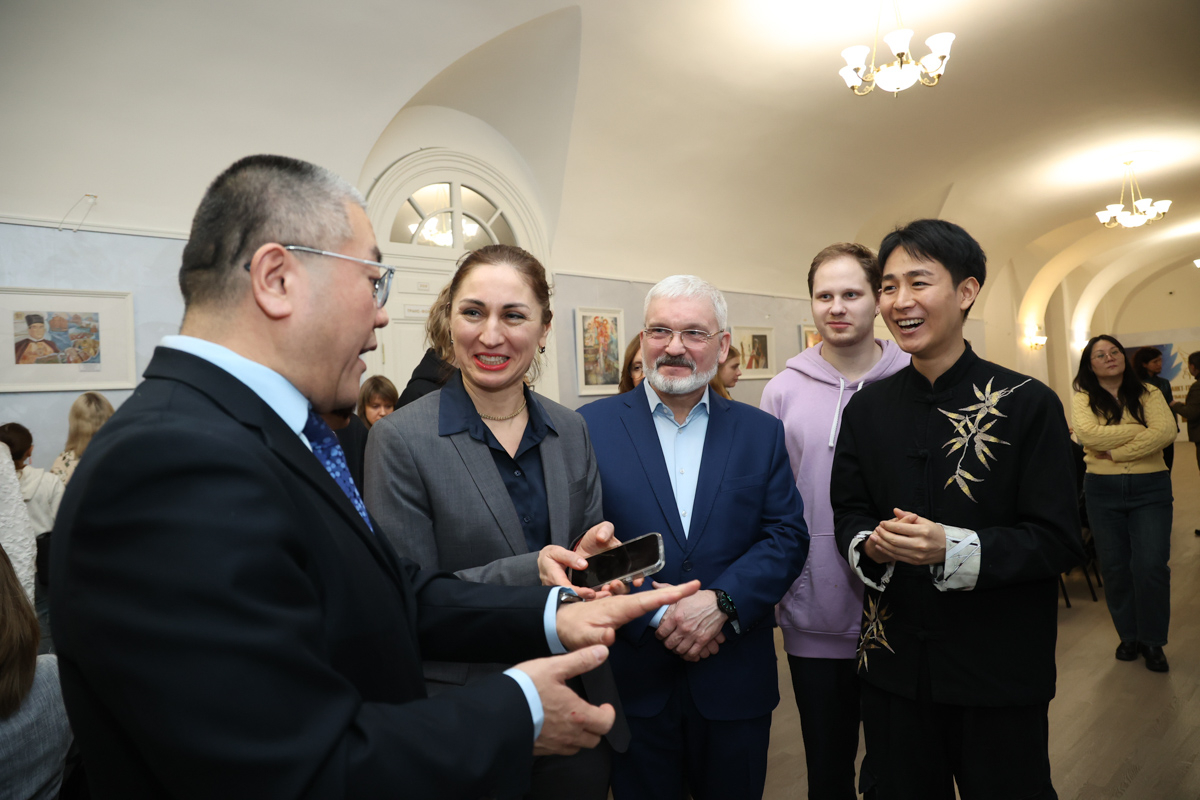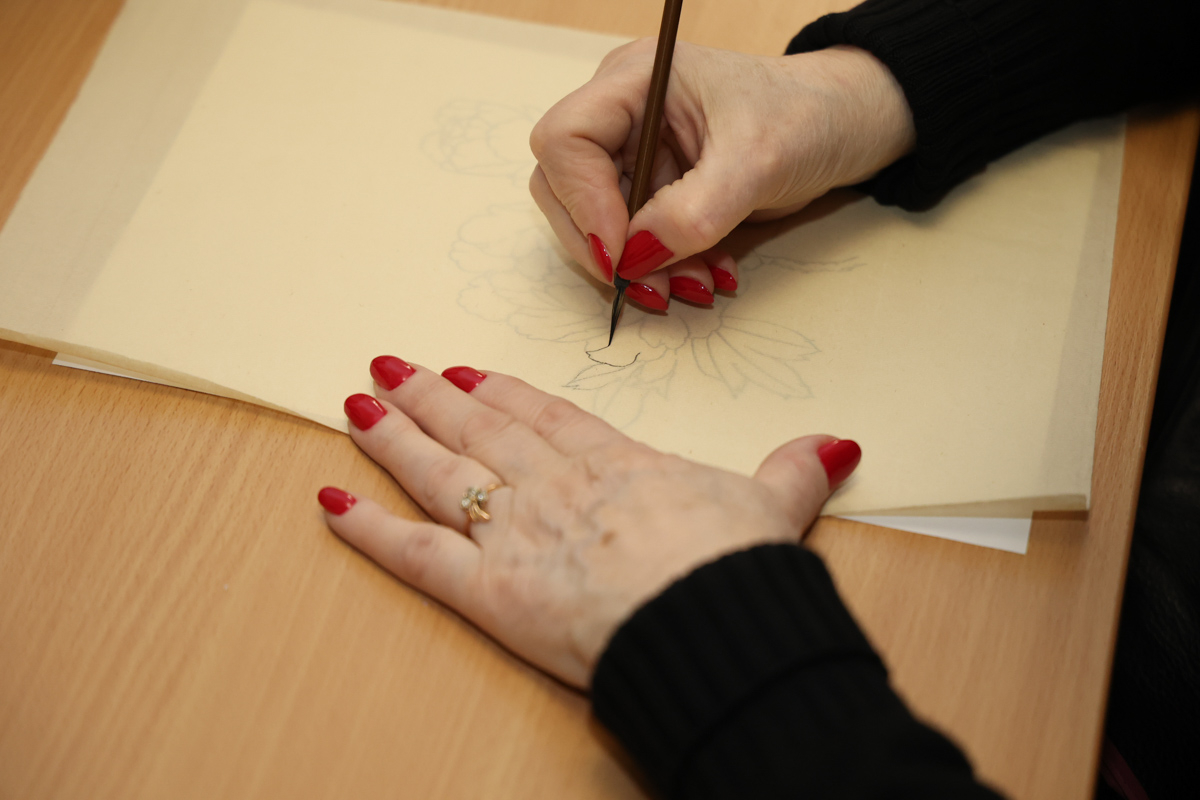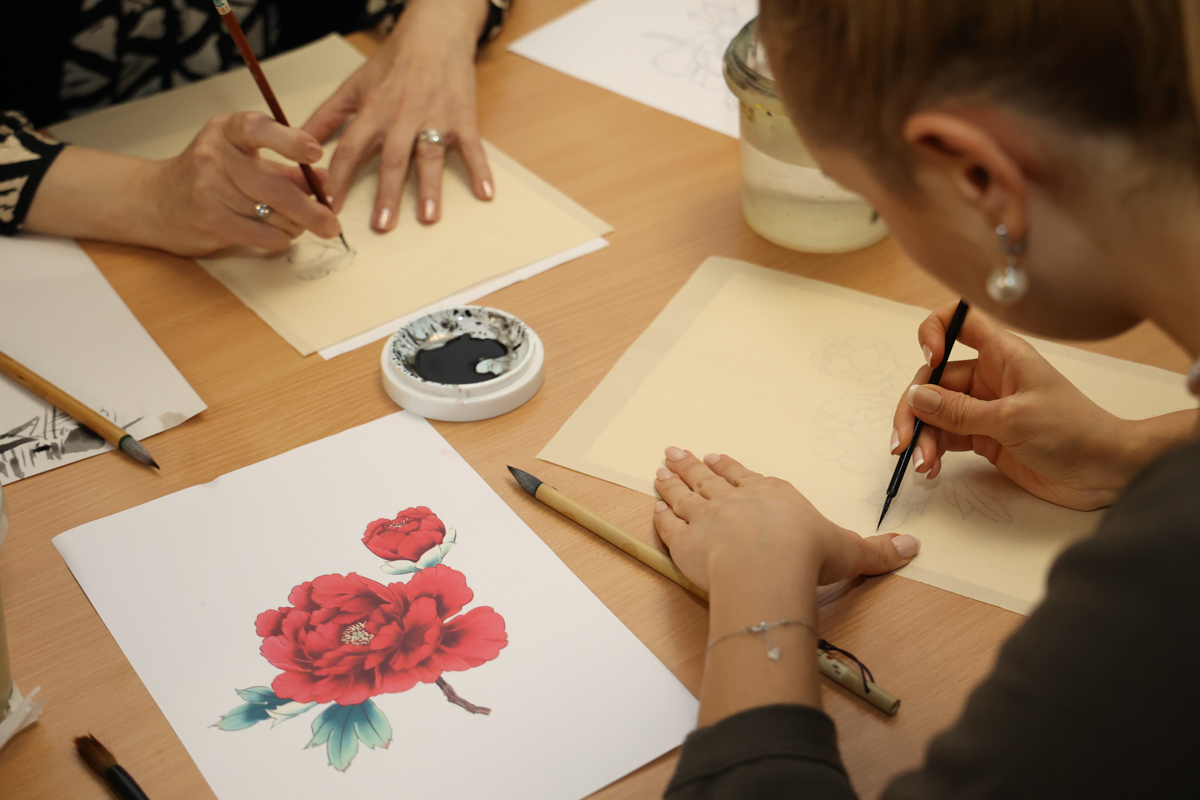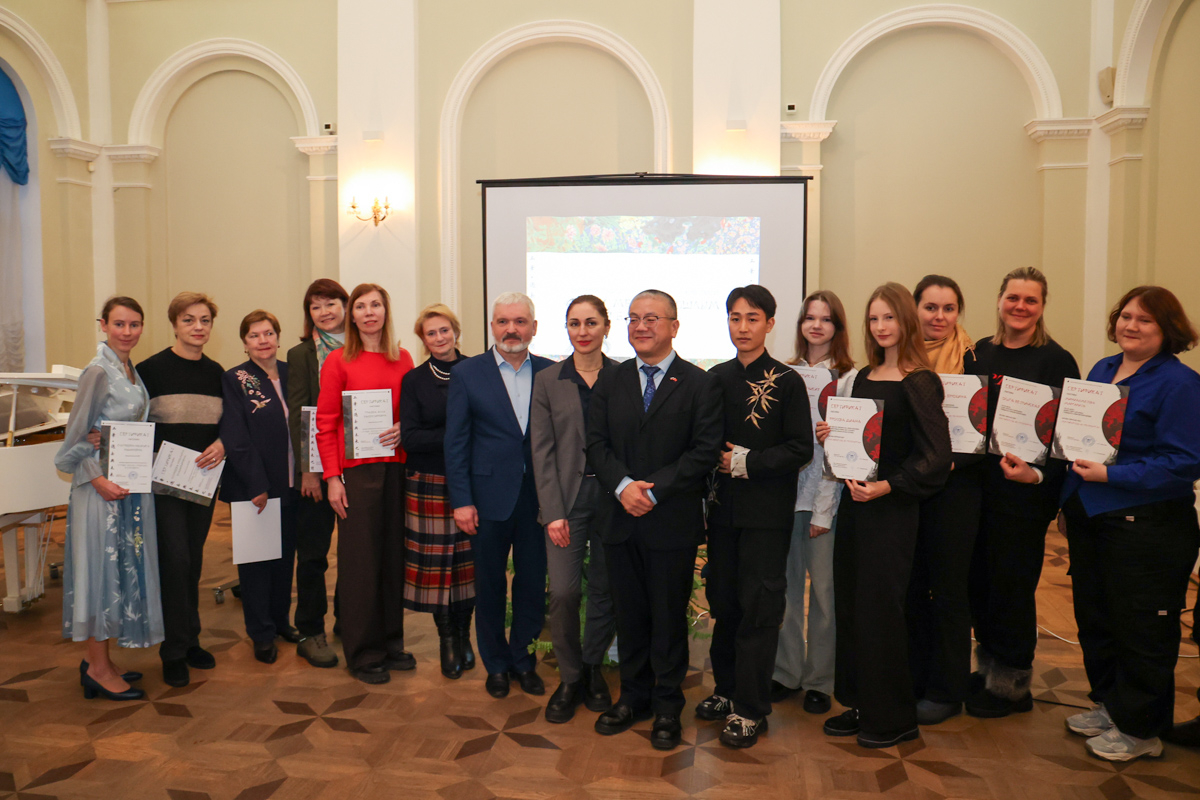"St Petersburg University is a platform for dialogue between cultures": an exhibition of the University staff and students at the House of Youth
In the China-Russia cross-cultural year, Luo Zhaohui, Consul General of the People’s Republic of China, has been an honorary guest on opening an exhibition on traditional Chinese painting by St Petersburg University together with the House of Youth of Vasileostrovsky District.
Cooperation between St Petersburg University and representatives of government bodies and scientific and educational institutions of China has a strategic character, which can be evidenced by the number of international projects. In the spring last year, an official visit to St Petersburg University was paid by Minister of Education of the Chinese People’s Republics Huai Jinpeng. The purpose of the visit was to discuss partnership relations in science and education.
The exhibition is another step in strengthening partnership relationship. It symbolises that St Petersburg University is committed to strengthening cultural interaction. Luo Zhaohui highly praised the works presented at the exhibition and emphasised the importance of such events for ensuring mutual understanding between peoples. "St Petersburg University is a serious platform for cultural dialogue between Russia and China. The exhibition that we are viewing today is of great importance for the development of humanitarian relations between St Petersburg and China. I am grateful to St Petersburg University for organising this wonderful event and for the opportunity for our professors and Russian friends to bring our cultures together," said the Consul General.
St Petersburg University is one of the key partners of China in education and science. Thanks to the assistance of the Ministry of Education of the People’s Republic of China, the Embassy of the People’s Republic of China in the Russian Federation, the Consulate General of the PRC and cooperation with research institutes, the University offers more than 90 academic programmes with a Chinese component and organises active academic exchange.
The event was a logical result of the University’s many years of work on the development of Russia-China cultural exchange, said Kseniia Pozdniakova, Head of the Department of Design at St Petersburg University, Chairperson of the organising committee of the exhibition. During many years, St Petersburg University has been offering non-degree programmes, she added. Among them are the following: "Confucius Institute at St Petersburg University" and "Traditional Chinese GōngbǐPainting", where students master key techniques of Chinese painting and understand the basics of the graphic and colour system.
"I want to wish everyone a Happy Chinese New Year, full of opportunities! St Petersburg University is not only a place where Chinese students study, but also a centre to support various international cultural projects on Russia and China," said Kseniia Pozdniakova. She also said that art is becoming a creative bridge that helps to ensure an understanding of the national characteristics of the two countries and increase interest in studying other cultural traditions.
You can stroll through the Blue Hall of the House of Youth and see the artists’ works on weekdays from 10am to 6pm. The exhibition is open until 18 February.
The exhibition presents the works of Tu Zhun, a graduate of St Petersburg University, winner of numerous prestigious Russian and international contests, teacher of the first in Russia non-degree programme in traditional Chinese gōngbǐpainting, along with those of his talented students.
The paintings depict detailed images of birds and flowers, conveying their grace and lightness, and picturesque landscapes, harmoniously combining realistic representation and symbolic interpretation. In the process of creating works, the masters use special mineral paints which have particular durability, and as a canvas they use silk or rice paper.
The exhibition is only part of the artist’s work. Apart from creative projects, Tu Zhun is also a co-author of the online programme of St Petersburg University "Chinese Painting" which introduces the history and basic techniques of the ancient Chinese art; the philosophical meanings behind each work; and also reveals the key differences between the calligraphic and painting traditions.
It is gratifying that there is an increasing interest in Chinese culture in St Petersburg and our students demonstrate the impressive results that we can present today.
Tu Zhun, a Chinese artist, a graduate of St Petersburg University, a teacher of the non-degree programme of St Petersburg University "Traditional Chinese GōngbǐPainting"
Tu Zhun also focused on the features of the style, which is characterised by the drawing of thin lines, verified proportions and the use of a harmonious colour scheme. "If you want to learn to create like a real gōngbǐmaster, you need to start with the very basics, i.e. lines, strokes, dots. First of all, we make the outlines of the future drawing. We apply very thin, light lines with a special pencil. Using ink, we work out the outline, and then move on to layer-by-layer application of paints," said Tu Zhun, Director of the Exhibition, during the workshop on Chinese traditional paintings. Under the guidance of the teacher, gusts drew peonies and camellias using this technique.
At the end of the gala evening, Sofia Shirinkina and Alisa Izak, laureates of Russia-wide contests, soloists of the Academy of Young Opera Singers of the Mariinsky Theatre, graduates of the academic programme of St Petersburg University "Academic Singing", performed musical compositions. The solo vocal parts were accompanied by Galina Zhukova, Associate Professor in the Department of Organ, Harpsichord and Carillon at St Petersburg University and a laureate of international contests.
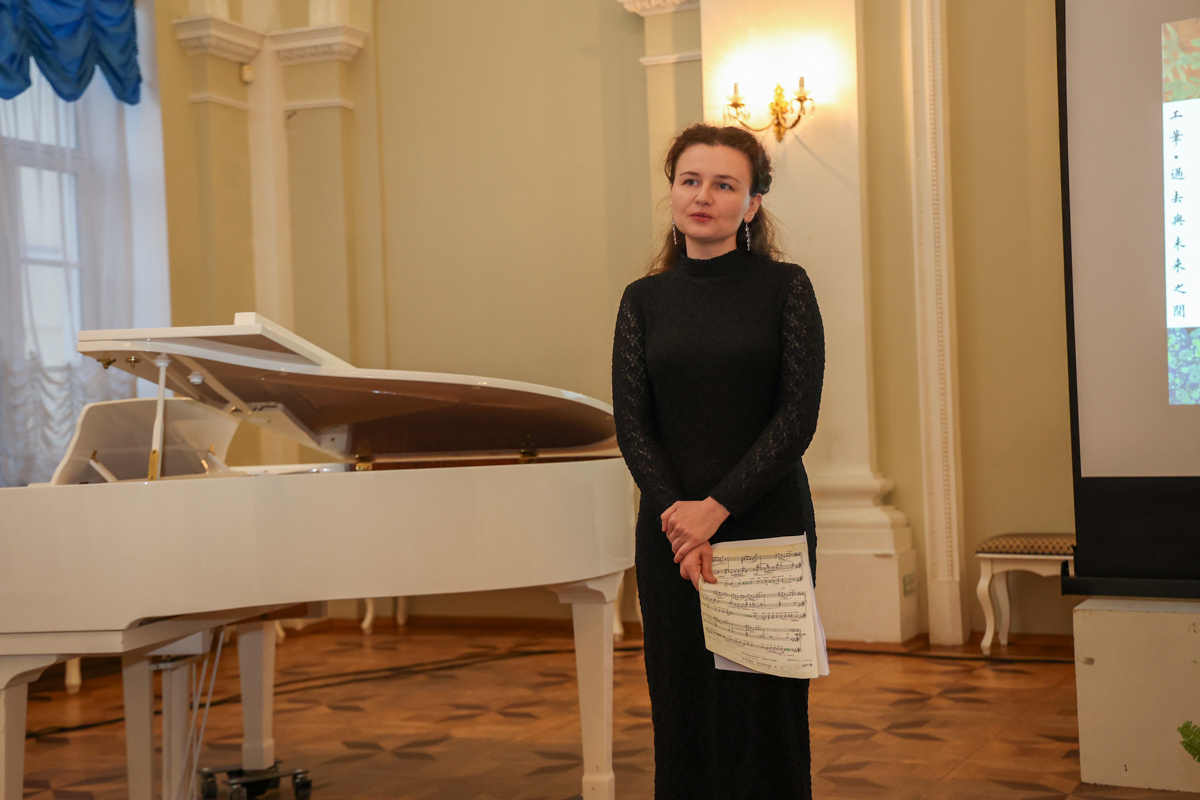
Despite the fact that the selected works at first glance are not connected with Chinese culture, they convey the mood, energy and general state of those present in the best possible way, and the works of Russian painters presented at the exhibition are harmoniously combined with Chinese traditions and modern artistic trends, said Galina Zhukova. "The language of painting and music is absolutely international. Art unites people, this is its strength," said Galina Zhukova.
During the visit to the exhibition and acquaintance with the students’ works, Luo Zhaohui, Consul General of the People’s Republic of China, shared his impressions of the works and expressed hope for further development of cooperation between the University and Chinese educational institutions. "It is amazing how young talents from Russia and China manifest themselves in art. It is necessary to expand the practice of exchanging creative works, which will contribute to an even closer cooperation between our peoples. I will work to strengthen these ties, because only together can we achieve more. By uniting, we become stronger," said Luo Zhaohui.


